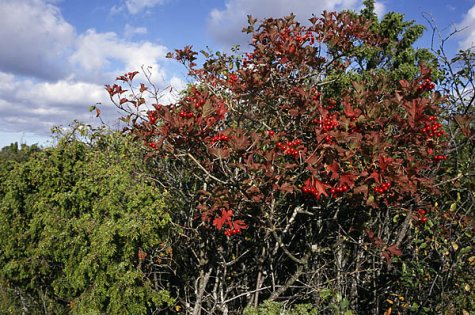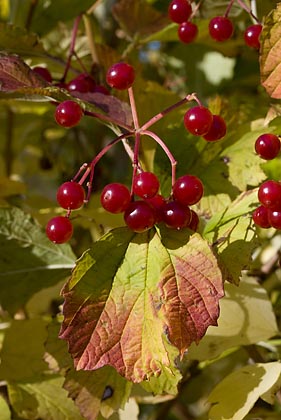Guelder rose attracts attention
Photos: Arne Ader
Translation: Liis
Guelder rose
Guelder rose Harilik lodjapuu Viburnum opulus
In autumn almost all trees and shrubs carrying berries and beautifully coloured leaves attract us – the Guelder rose is a real beauty.
Guelder roses grow almost everywhere in Estonia, perhaps more frequently in West Estonia, but nowhere in great numbers. We can be sure to see it in fresh broadleaf forests, in wooded meadows, the banks of water bodies and also on the seashore. The Guelder rose remains a shrub, stretching up to three-four meters in height in underforest layers, but despite this it is considered to be long-lasting, up to fifty years. The three-lobed leaves resemble maple leaves and are now turning into a purplish flaming red.
Seen from far the berries look like rowanberry clusters. In the bright red, glossy berries with a diameter of about one centimetre is one large, flat seed – thus a drupe. As raw the fruits are slightly toxic, with an insipid taste and unfamiliar smell. Pinched by night frosts the fruits are edible and the toxicity disappears. From the fruits, rich in sugars and vitamin C, a splendid tea can be prepared with a taste that is a pleasant surprise. Native people have stored them diligently, mainly as dried. A cooked sweetened dessert soup, "kissell“, from them has a rather special taste; Guelder rose berries have also been added to apple compotes, and marmalades or jellies have been prepared from them – I have tasted these home-made preserves.
In city parks and landscaping a variety with yellow leaves in autumn is used as ornamental shrub.
Guelder rose










